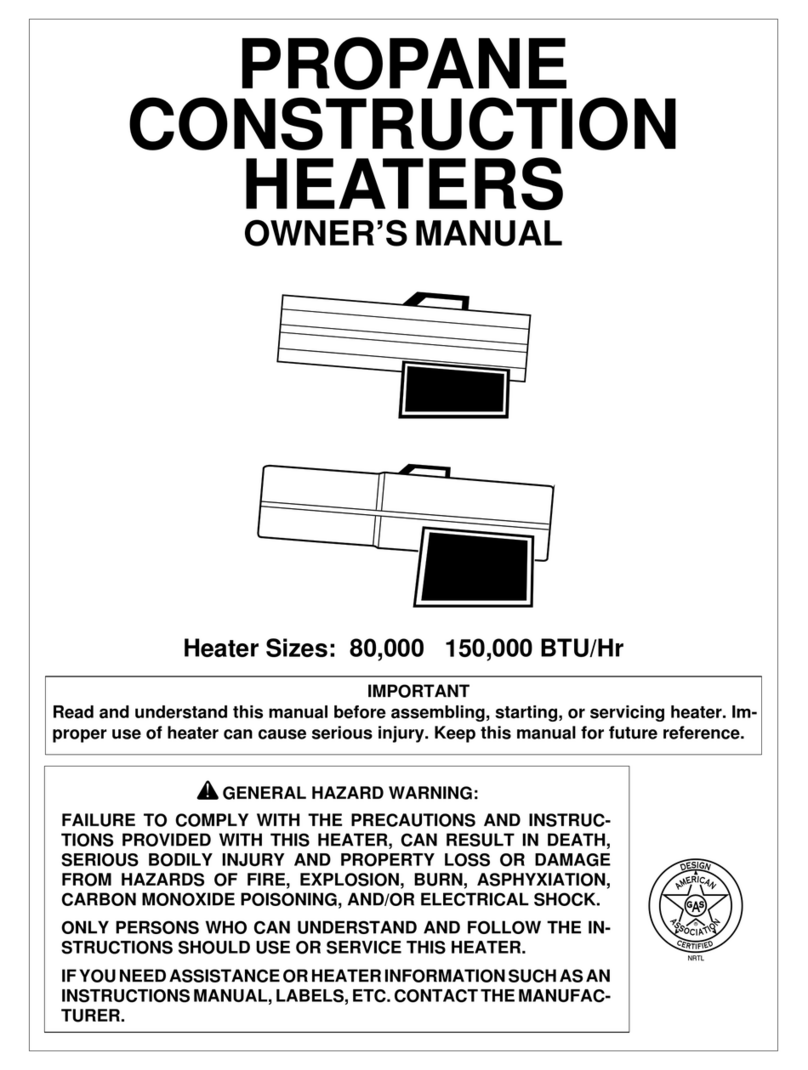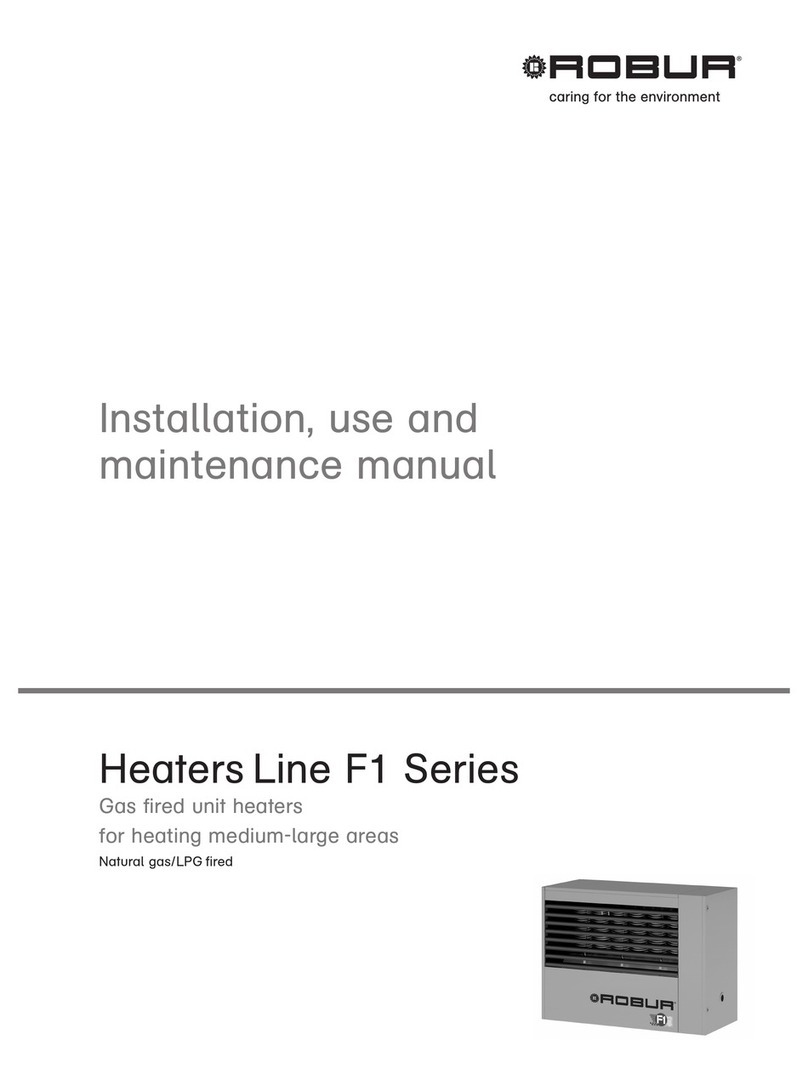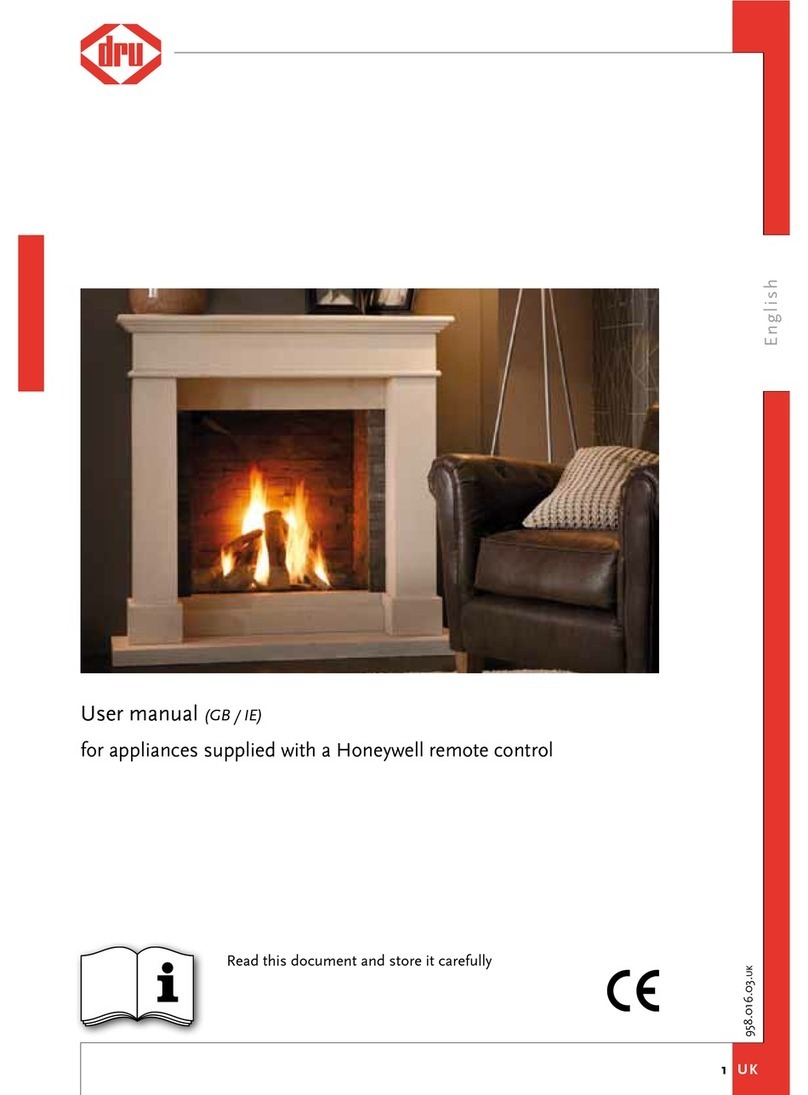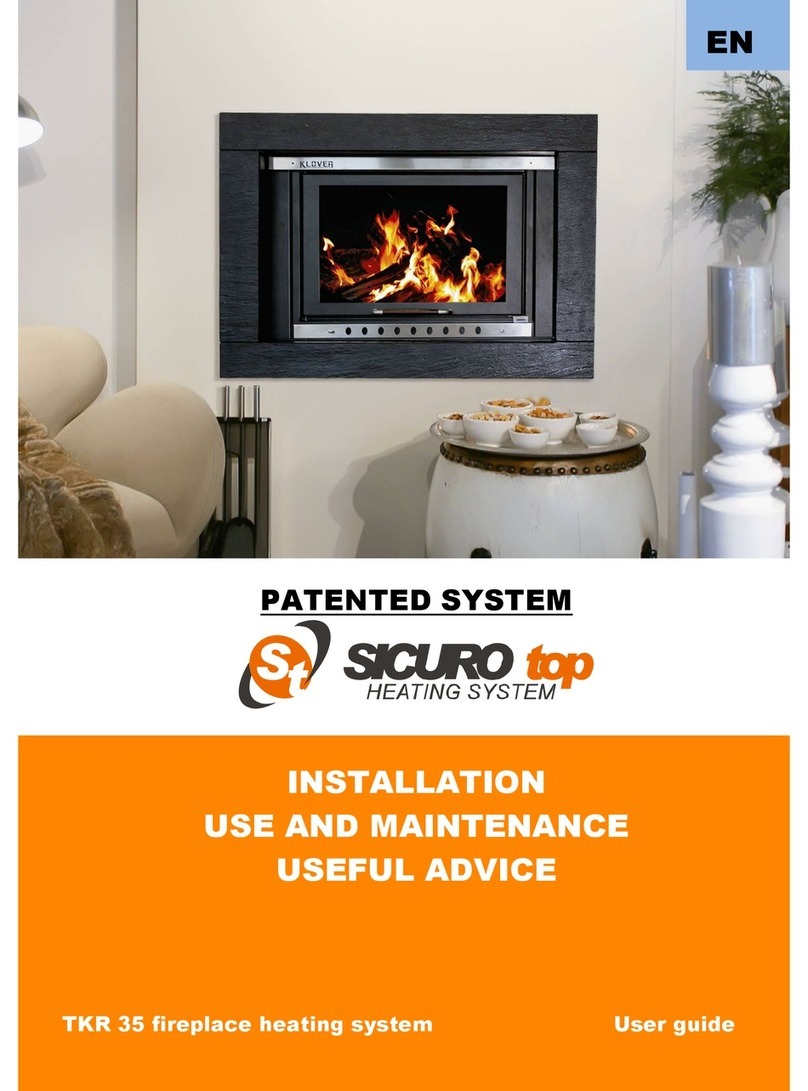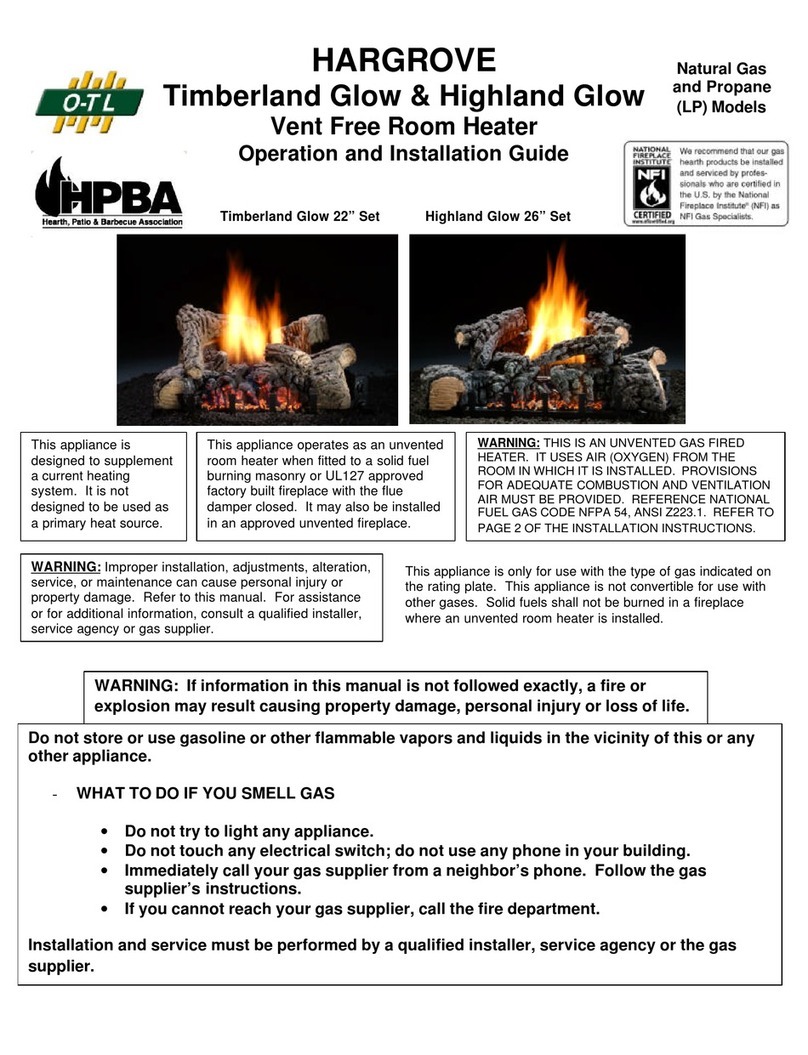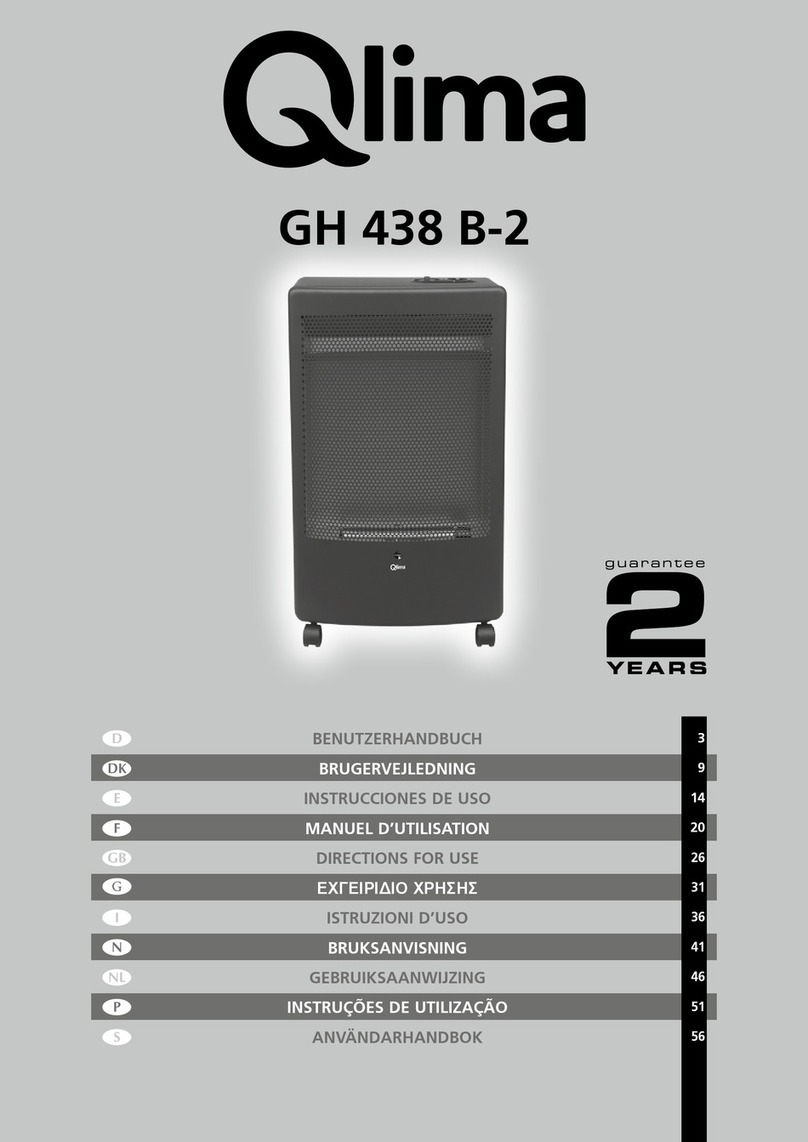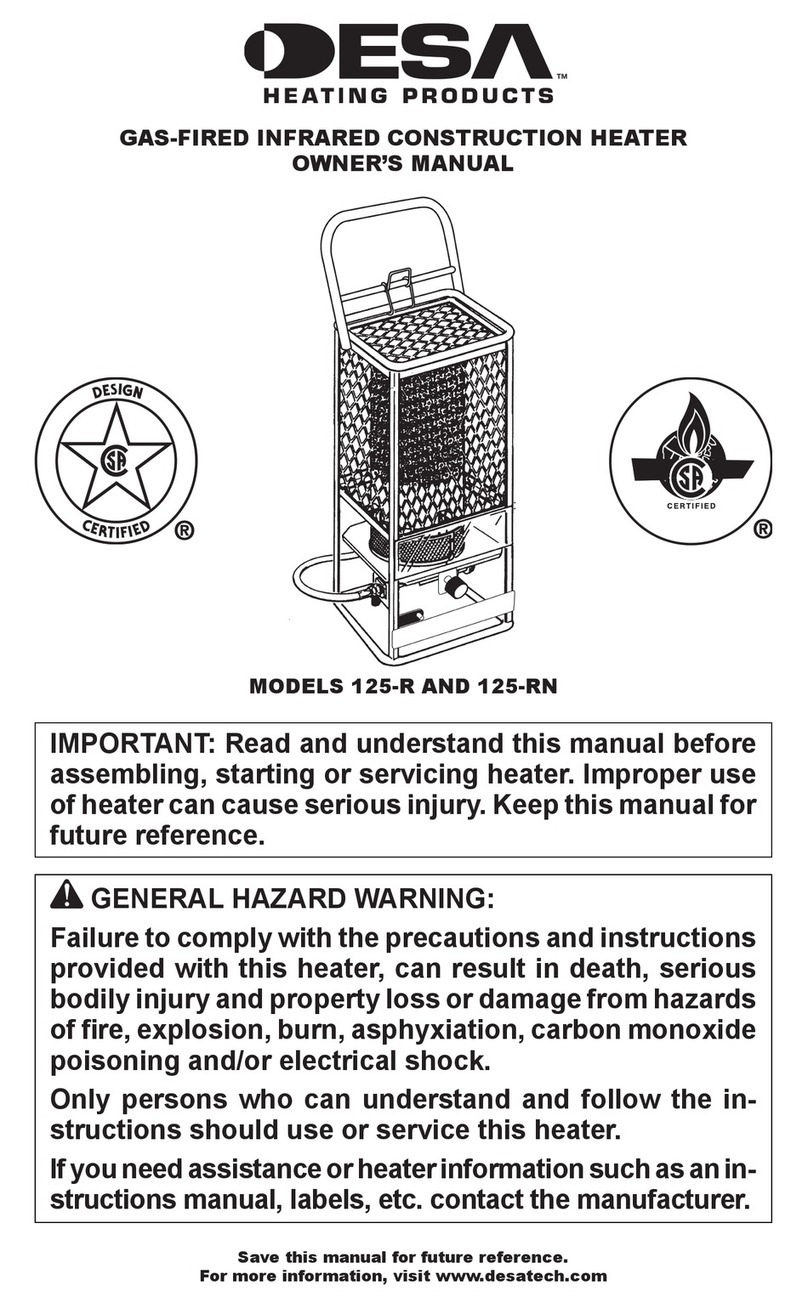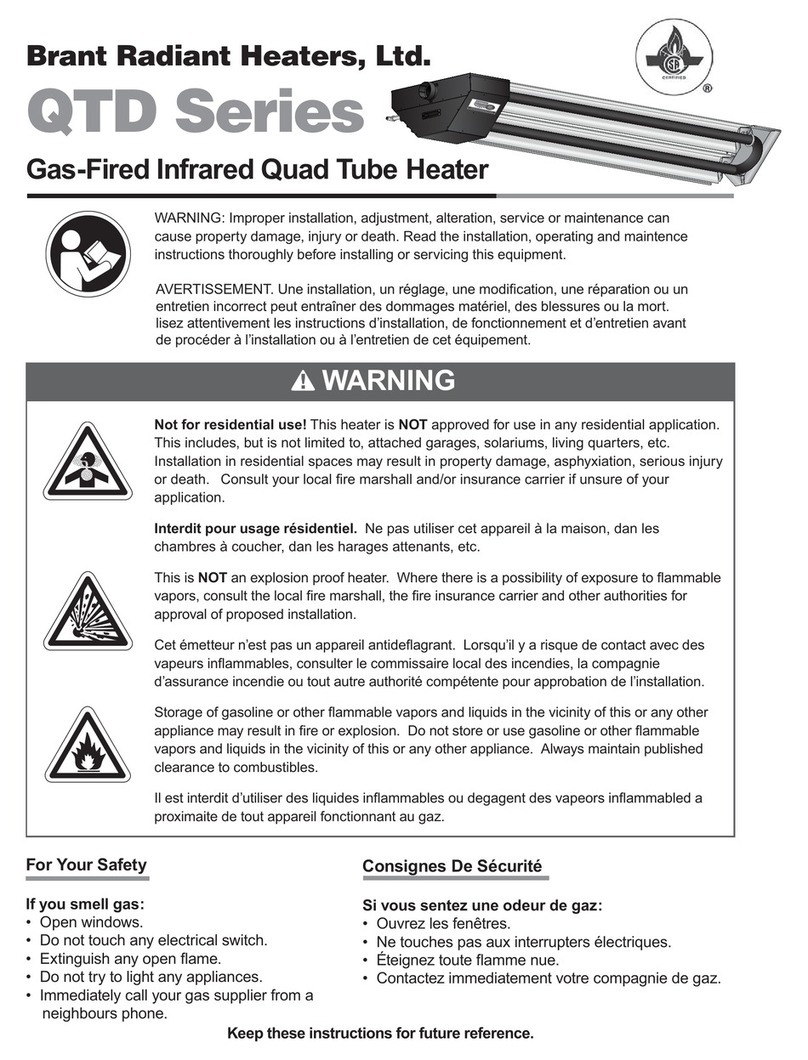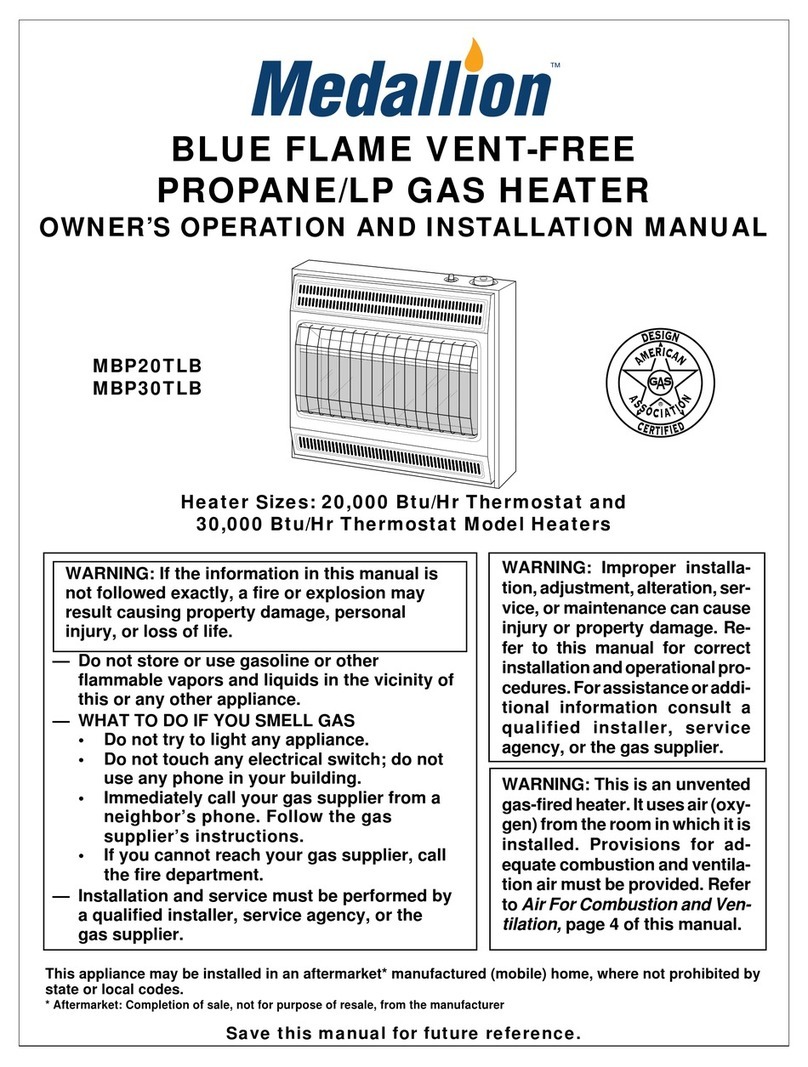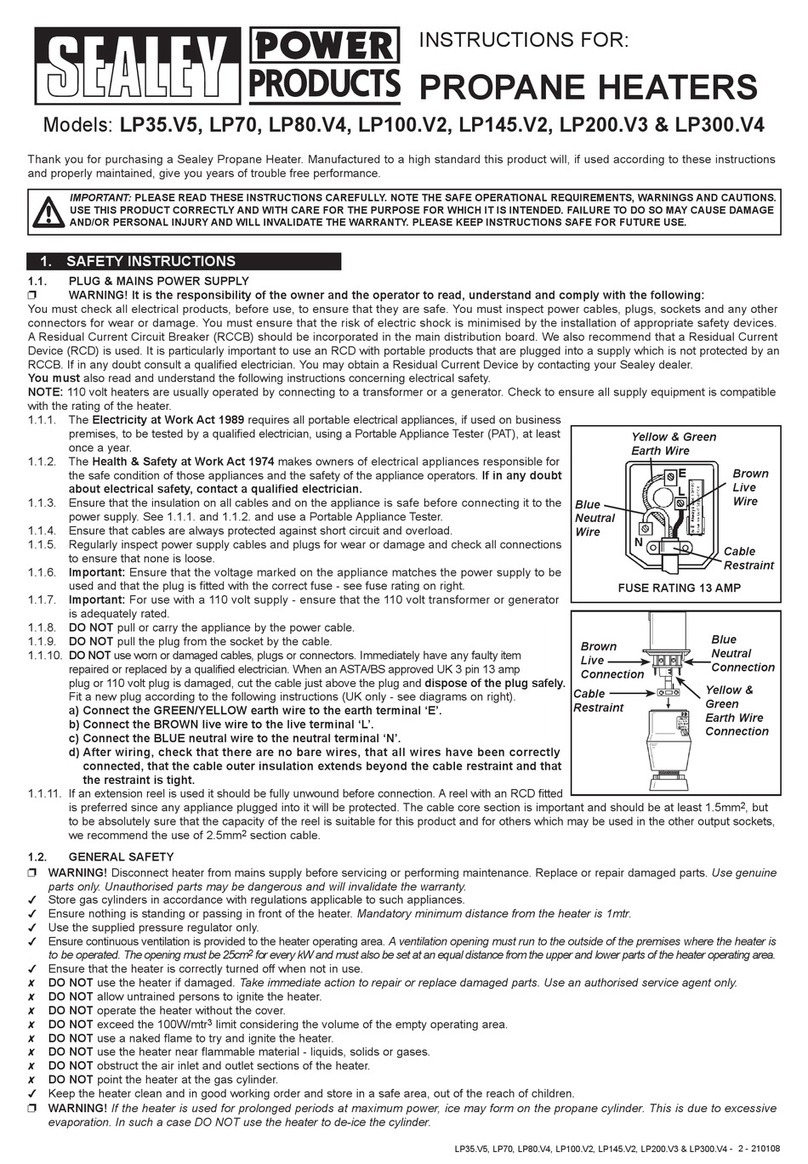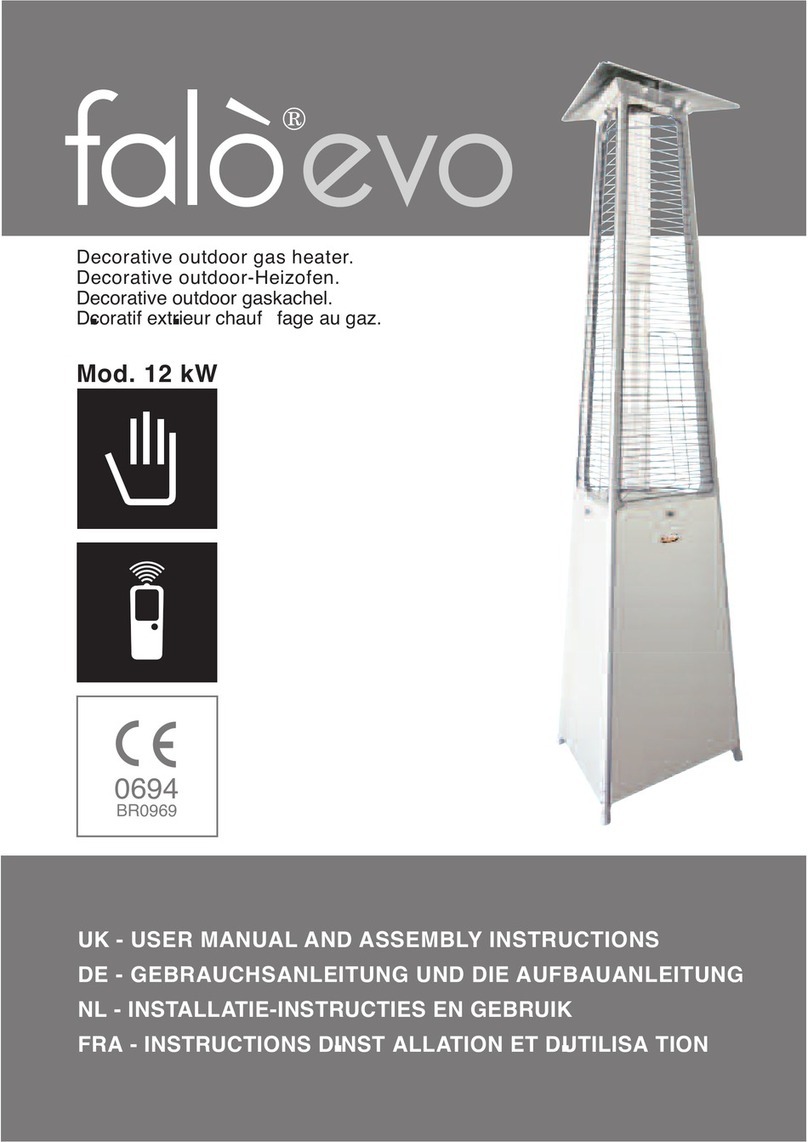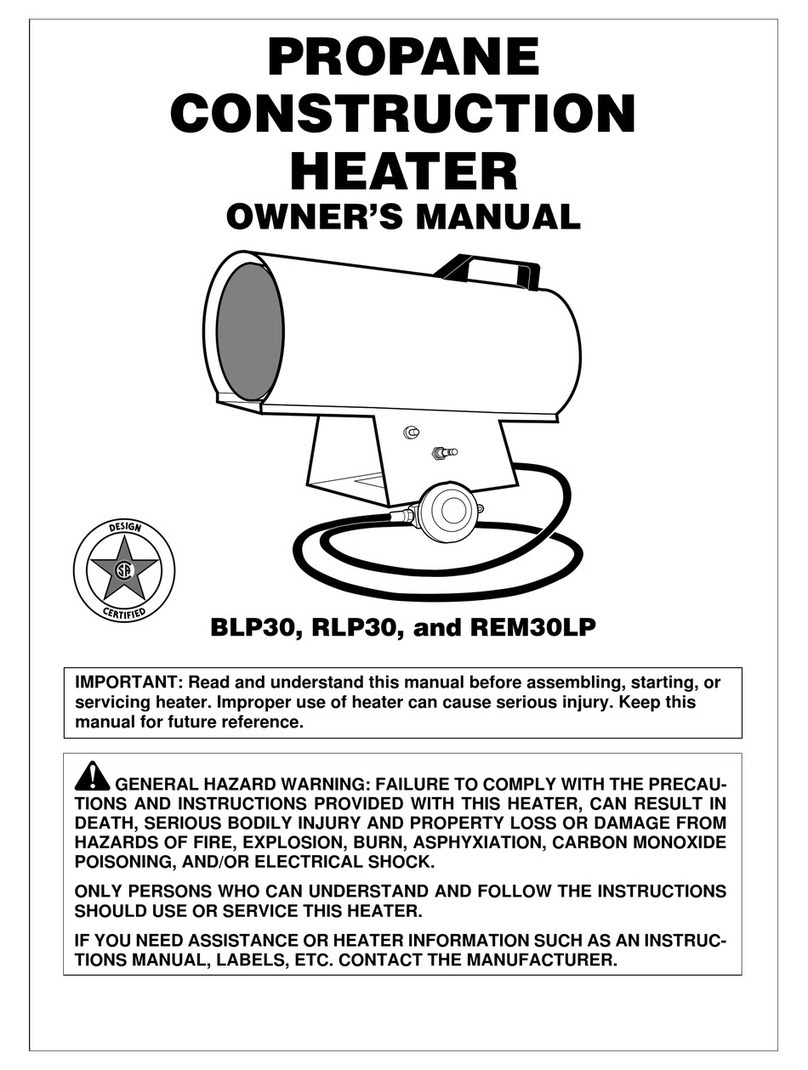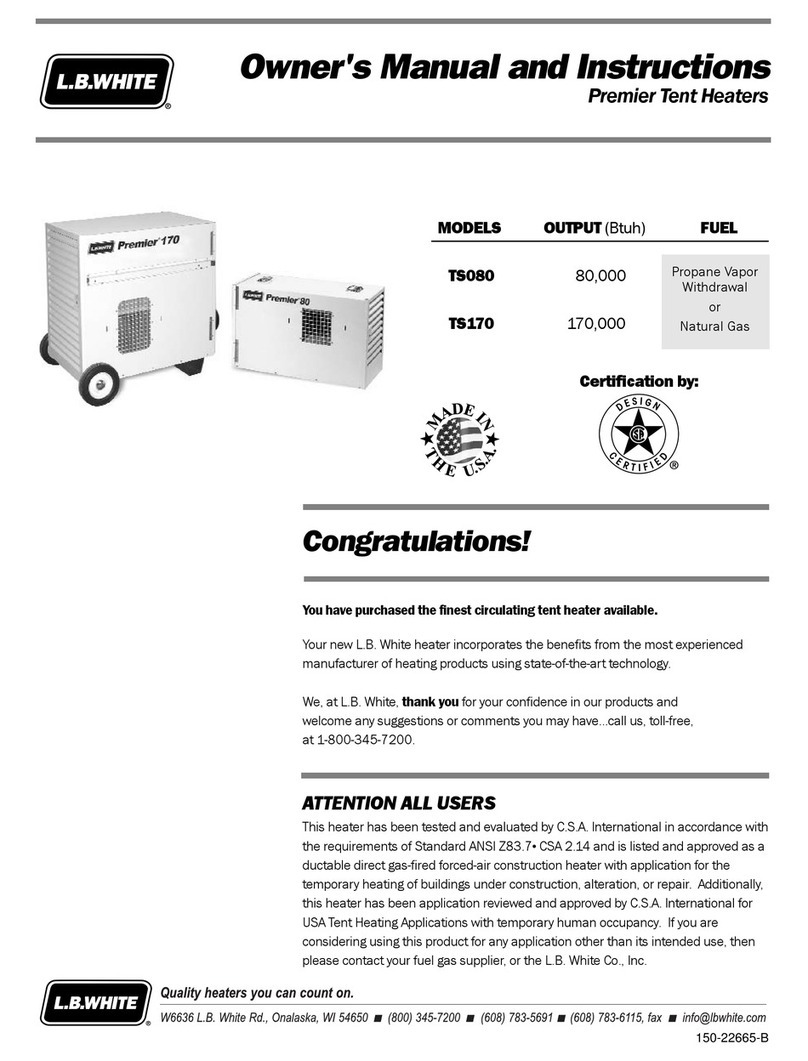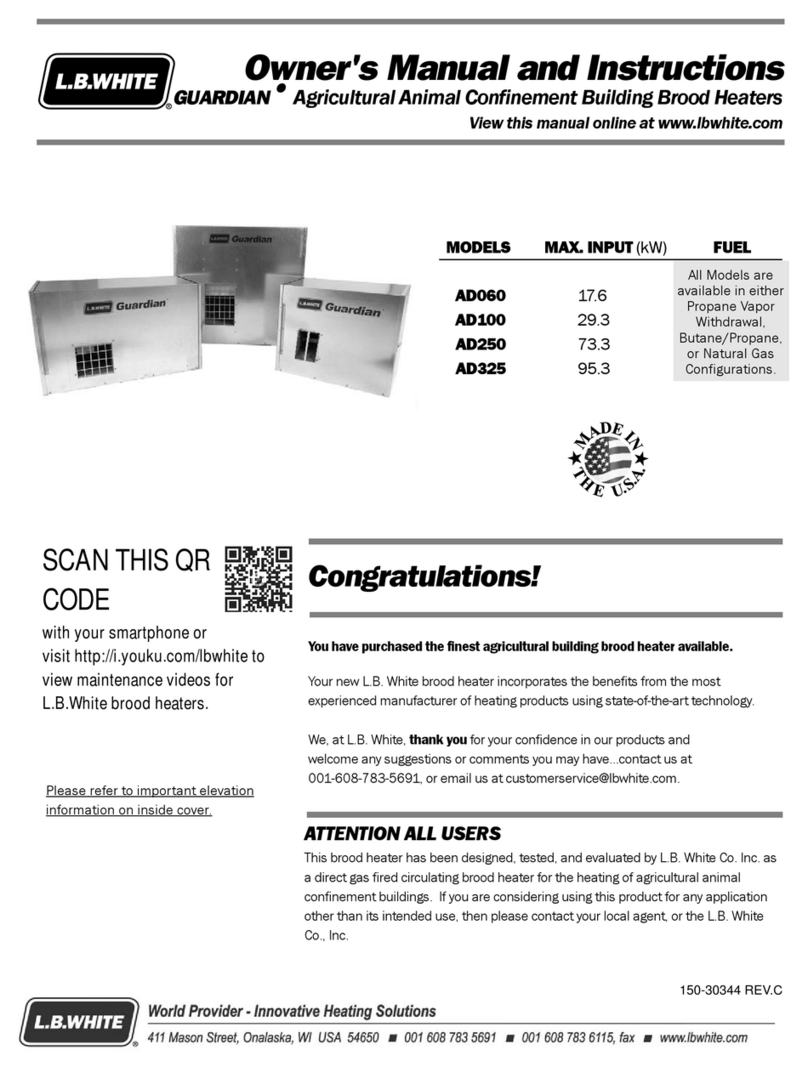1. These safety precautions have been developed as
generally applicable to all propane and natural gas-
fired heaters manufactured by the L. B. White
Company. They are designed to be consistent with
other printed specifications and instructions provided
to you with your heater.
2. National, state and/or local codes may impose
standards applicable to installation and gas
servicing subjects covered in these SAFETY
PRECAUTIONS.
3. The gas supply line installation, the repair and the
service of this heater requires continuing expert
training and knowledge of gas heaters and should
not be attempted by anyone who is not so
qualified:
QUALIFICATIONS FFOR
SERVICING AAND IINSTALLATION:
a. To be a qualified gas heater service person, you
must have been trained in gas-fired appliance
servicing, repair and also have sufficient
experience to allow you to troubleshoot, replace
defective parts, and test heaters in order to get
them into a continuing safe and normal
operation condition. You must completely
familiarize yourself with each model heater by
reading and complying with the safety
instructions, labels, owner’s manual, etc. that is
provided with each heater.
b. To be a qualified gas installation person, you
must have sufficient training and experience to
handle all aspects of installing, repairing and
altering gas lines, including selecting and
installing the proper equipment, and selecting
proper pipe size to be used. This must be done
in accordance with all local, state and national
codes as well as the manufacturer’s
requirements.
4. All installations or applications of L. B. White Co.,
Inc.’s equipment should meet the requirements of
local, state and national propane gas and natural
gas, electrical and safety codes. Your gas supplier,
local licensed electrician, local fire department, and
government agencies can help you determine these
requirements. In absence of local codes, comply
with the Standard for Storage and Handling of
Liquefied Petroleum Gas, ANSI/NFPA 58-Latest
Edition, ANSI Z223.1/NFPA 54 National Fuel Gas
Code, and ANSI/NFPA 70 National Electrical Code. If
you are still in doubt, contact the L. B. White Co., Inc.
5. We cannot anticipate every use which may be made
of our heaters. Check with our local fire safety
authority if you have questions about applications.
6. Do not operate the heater with panels removed.
7. Forced air heaters shall not be directed toward any
propane gas supply container within 20 ft. (6.10 m)
8. The minimum of propane gas supply cylinder size
should be a 100 pound propane gas supply cylinder.
When using a cylinder supply system, it should be
arranged to provide vapor withdrawal from the
operating cylinder.
9. The heater shall be installed so that it is not directly
exposed to water spray, rain, or dripping water.
10. If at any time you notice something unusual about
the operation of your heater such as gas odor,
overheating, flames other than in the burner area,
etc., evacuate the area immediately and call your
fire department and your gas service agency.
Get assurances from the fire department that the
area is free of gas before you attempt to relight
heater.
11.
GAS LLEAKS: Any leak of gas from the appliance or
gas line creates an extremely hazardous situation.
Even small quantities of leaked gas can explode with
disastrous consequences. Accordingly, any leak of
fuel, no matter how small, poses the risk of severe
injury or death in the event of an explosion, as well as
the risk that users might be smothered by the
presence of fuel fumes. The odor of leaking gas may
be masked by other smells in the vicinity of the
appliance. Propane fuel is heavier than air and is
most readily sniffed by placing your nose close to
the level of the floor. If you don’t smell the odor of
the gas, but nonetheless suspect that propane has
leaked, you should immediately vacate the premises
and call the gas company or your local fire depart-
ment. Do not allow any sparks or flames to come
into an area where it is suspected that gas has
leaked.
12. Intended use is the heating of agricultural buildings.
This heater is designed for indoor installation only.
Adequate vventilation mmust bbepprovided, oother-wwise
sooting ooriimproper ccombustion mmay ooccur.
13. The flow of combustion and ventilation air must not
be obstructed.
14. Do not move, handle, or service heater while
in operation or connected to a power or fuel
supply.
15. DO NOT wash down interior or exterior of heater. Use
a soft brush or dry cloth only to clean interior or
exterior of heater.
16. For safety, this heater is equipped with a manual
reset high-limit switch. The high limit switch may be
6
